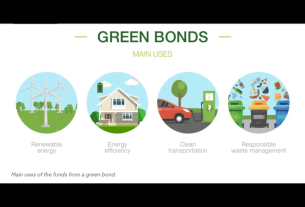
We’re delighted to announce that the winner of the 2022 Harper Prize is Angela Illuminati! The Harper Prize is awarded annually for the best paper published in the journal by an early career researcher.
Winner: Angela Illuminati
Research: Coordination between water uptake depth and the leaf economic spectrum in a Mediterranean shrubland
In this blog post, we ask Angela some questions about her research and career to date:
⭐️ Can you summarise the research in your paper and how it advances the field?
Understanding plant functional strategies related to water and nutrient use is especially relevant in dryland environments where the low availability of soil resources represents a strong limiting factor for plant survival, and is thus a main driver of species competition and coexistence. In this context, our research provided a new perspective about the links existing between water and nutrient use in a semiarid Mediterranean plant community.
We found evidence of distinct soil water niche partitioning among 23 coexisting species, a phenomenon which has been detected in several habitats, but only a few studies had previously considered a plant community perspective. Specifically, we detected a tight coordination between soil water uptake depth and leaf-level carbon- and nutrient-use strategies along the Leaf Economics Spectrum, with a shallow water uptake pattern associated with a more acquisitive strategy while a deeper water uptake with a more conservative strategy.
In conclusion, our study provided an improved integrative perspective on plant functional strategies related to water and nutrient use in dryland environments.
“Angela’s paper impressed the editors by its experimental design qualities, its clear messaging and an astute discussion touching on implications of her work for whole-plant trait coordination, nutrient competition and community assembly in ecosystems co-limited by nutrients and water” – Susan Schwinning, Associate Editor, Journal of Ecology
⭐️ What did you enjoy most about conducting this research?
This research was great in so many ways. I enjoyed it very much from various points of view.
First of all, this work was born after a previous failure, which makes it an even greater success. The first aim of the work was to detect the root depth of woody species coexisting in a semiarid plant community (mostly characterized by chamaephytes, hemicryptophytes and grasses) in the south of Madrid region. Despite our best efforts, our measurements were too coarse (most of roots were fine, < 1 mm diameter, and broke very easily) while the amount of time spent during excavation was huge. And so, we gave up on the root measurements in the field and searched for alternative methods.
I’m fortunate that my directors (Adrián Escudero and Silvia Matesanz) have been always highly supportive. When I mentioned the possibility to use water isotopes as an alternative way to measure water uptake depth (which in some ways is an even better measure), they welcomed the idea and helped me to establish contact with an expert (José Ignacio Querejeta) in the field for a possible collaboration. Thus, we started the collaboration, which was very enriching and formative both academically and personally.
I truly enjoyed working with stable isotopes, as they provide an incredibly powerful tool to explore a variety of processes related to plant water and nutrient use, and I look forward to further use isotopic methods in my plant eco-physiological research.

⭐️ Have you continued this research and if so, where are you at now with it?
This study was part of my PhD research, and thus it was continued into two main directions according to the aims of the main project (ROOTS, CGL2015-66809-P) related to my thesis. Specifically, in order to obtain a complete assessment on plant nutrient use strategies and their relationship with water use in a whole-plant framework, I measured key root traits to be integrated in the analysis (manuscript in preparation). In addition, to assess questions more directly associated to species coexistence in arid environments, I am currently exploring patterns of belowground functional diversity at a very fine neighbourhood spatial scale (manuscript in preparation), by integrating functional traits related to both water and nutrient use in a spatially explicit point-pattern context, where the belowground plant community was detected by applying DNA metabarcoding techniques as a first chapter of my PhD thesis.
⭐️ About Angela
Angela grew up in the Apennines in the centre of Italy. Under pristine skies full of stars, her passion for nature bloomed. As a teenager she loved mathematics, astronomy, and philosophy. She combined her love for nature and science by taking a bachelor’s degree in Natural Sciences (Perugia, Italy), further motivated by ever-growing issues related to environmental pollution and nature conservation. During her early academic years at University, her curiosity was encouraged by her bachelor’s thesis mentor, and she became passionate about plant ecology. She further specialized in this field during her master’s degree at the University of Bologna (Italy) and, after carrying out short stays at different research centres in Europe, she started her PhD thesis in Spain at Rey Juan Carlos University (URJC, Madrid). During her PhD research, she investigated belowground plant-plant and plant-soil interactions in Mediterranean semiarid environments. She fulfilled her PhD with honours in September of 2022 and she is currently a post-doctoral researcher in the Area of Biodiversity and Conservation, URJC.
Find the winning article: ‘Coordination between water uptake depth and the leaf economic spectrum in a Mediterranean shrubland‘, as well as the shortlisted papers for the 2022 Harper Prize in this virtual issue.

